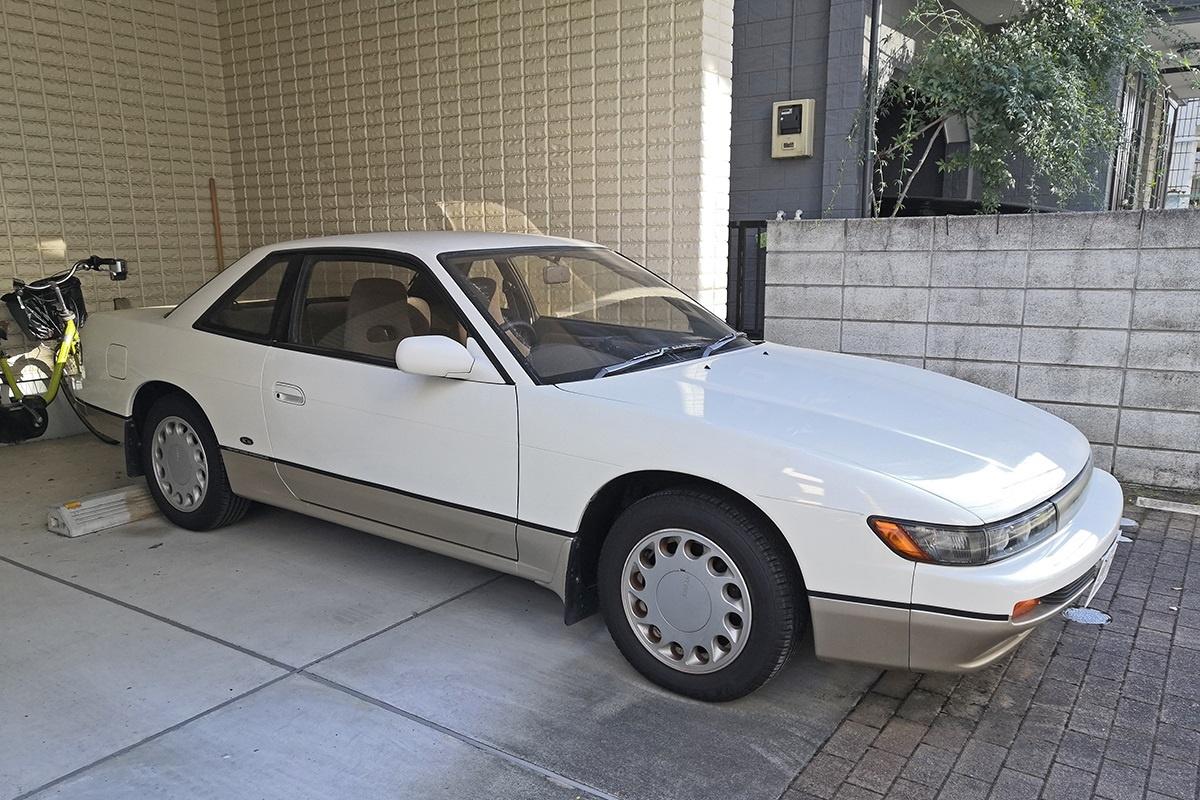
Curbside Classic: 1989 Nissan Silvia (S13) K’s – Peak Silvia

There aren’t many 30-year-old cars in fairly large numbers on Japanese streets and roads. Toyota Mark IIs (X70/X80), S130 Crowns and FJ60 Land Cruisers are still about. Second-gen Mazda RX-7s are too, as are Mitsubishi and Suzuki 4x4s, but old Subarus and Hondas (of any sort) are rare. As for Nissans, plenty of Y30/Y31 Cedric / Glorias, Sunny B120 pickups and R32 Skylines remain in daily use. But the real hard core survivors of the fade-out of the Japanese Bubble Economy are definitely the many S13 Silvias still prowling this country’s highways and byways.

There is always a however. In the S13’s case, the issue can be of finding one that seems in good condition, by which I mean original, unmolested and well cared for. That can be a little more challenging. These cars are the darlings of the drift crowd, so a great number have been modded to hell and not a few have had encounters with railings, other cars and other war wounds.

I applied the Zen version of the CC ambush hunter creed: don’t look for something, that way you’re sure to let it find you. So one fine day, late last year, I encountered this perfect early model S13. Only issue was the colour - white is never a very easy colour to photograph. At least it goes well with the car, which is not always the case.

Let me show you an example of the sort of S13s one can see here. This sad-looking individual, parked in front of an equally dilapidated house, is a pretty extreme case, but it will do very well to illustrate my point. Silvias were plentiful, reliable and fun, so they stuck around - sometimes way past their prime, while their boring, broken-down and rare competitors are long gone to the great junkyard in the sky.

Even in Japan and even back in the late ‘80s, few cars had the Silvia’s specs. By which I mean that our feature car has a 1809cc DOHC 4-cyl. engine - which happens to have a turbocharger, and thus makes 175hp. This ample power is sent via a 5-speed manual gearbox to the independently-sprung rear wheels. Given the relatively light curb weight (1110kg), performance was quite outstanding. In 1991, the CA-Series engine was replaced by a 2-litre SR-Series 4-cyl., which further boosted performance.

Who else was making RWD 4-cyl. turbocharged coupés in those days? Most of the Silvia’s domestic competition - Honda Prelude, Toyota Celica, Mitsubishi Eclipse - were FWD (or AWD) and the Mazda RX-7, though RWD, was also in a class of its own due to its high-maintenance Wankel engine. Even on the foreign markets, where the S13 put on a different front end and went by Nissan 200SX (in Europe) or 240SX (in North America), the Nissan coupé’s true rivals were the BMW E30, which was more of a two-door sedan than a coupé, the FWD Scirocco and… er… is that it?

Our feature car is a higher-spec K’s, with the turbo engine and all the requisite bells and whistles. Mid-level trim Q’s and base-trim J’s only received the naturally aspirated 1.8, which only churned out 138hp. But from the outside, aside from the discreet badging on the flanks, there is nothing to tell a fancy Silvia from a lesser one.

There was a visibly exclusive S13 Silvia though: the Autech convertible. They only made 600 in 1988-89, so if I ever catch one - even an abandoned one - I’ll be sure to document it. There was also the 180SX, which was the same S13 platform but with a fastback body with pop-up headlamps, just like the 200SX/240SX.

It was fast, it was fun, but most of all, the S13 Silvia was cool and affordable, particularly in those heady final years of the Bubble Economy. Younger buyers snapped them up as soon as Nissan could churn them out. In short order, the Honda Prelude lost its place as Japan’s number one hipster coupé, never to really regain its crown. The Silvia’s time in the sun was also pretty short: the S14 piled on the kilos and grew too big for the Japanese taxman, making it far more expensive than before, just as salaries had stopped growing.

Nissan corrected this with the S15, but alas that was to be the last Silvia. The world had apparently moved on and high-performance 4-cyl. RWD coupés were no longer seen as part of Nissan’s remit. The mind boggles, but one could not argue against Renault logic (at the time anyway - things have changed since then.) Over 300,000 of the S13 Silvias were sold and it seems a large proportion of them went to people who really loved to drive them.

Perhaps the secret ingredient that made this car such a legend was its looks. Had it been ugly or merely boring like some of its kin, I doubt this Silvia would have commanded such loyalty from the public. It isn’t flashy or revolutionary, just exquisitely balanced and quietly dynamic. Along with the R32 Skyline, the C33 Laurel and the Y31 Cedric / Gloria hardtop, Nissan really had their moment, in the late ‘80s. Peak Nissan led to peak Silvia, almost by definition. Too bad peaks tend to end kind of abruptly (again, by definition). You wand a high plateau? Try Tibet - or, if we’re still talking figuratively about carmakers, Toyota.
Related posts:
Curbside Classic: 1989 Nissan 240SX And Silvia/SX History - Who’s The Prettiest Silvia Of Them All?, by PN
eBay Find: Nissan 240SX - See? There Was One, by Geraldo Solis
Link nội dung: https://aicschool.edu.vn/nissan-s13-a76431.html